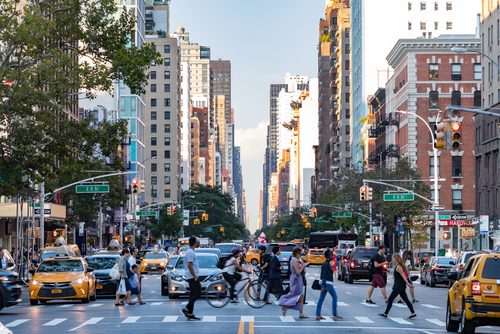
On Oct. 26, the New York Metropolitan Transportation Authority (MTA) announced it was undertaking a series of actions as part of its Bike, Pedestrian, and Micromobility Strategic Action Plan.
In collaboration with local government, advocacy groups, and stakeholders, the MTA developed the plan that outlines how pedestrians, cyclists, and micromobility users can better access MTA facilities and services. The plan includes capital projects to enhance bike and pedestrian access to MTA bridges, additional bike parking infrastructure at subway stations, and improved car-free connectivity between commuter rail stations and local communities.
“Increasing access and connections to MTA services is one of my top goals,” said MTA Chair and CEO Janno Lieber. “Today’s announcement represents the first steps in a comprehensive strategy to provide more car-free access to transit across the New York region. As MTA ridership continues to rise, the actions we unveiled today will upgrade connections to transit for cyclists, pedestrians, and micromobility users and bring more riders back to the MTA’s subways, buses, and commuter railroads.”
First announced in May, the final Strategic Plan will be released by the end of 2022 and will build on these initial actions, authorities said, to address how the MTA can improve access to its services and facilities. The plan will help support the growth of sustainable transportation modes and boost transit ridership, the agency said.
Included in the initial actions are the approval of projects to improve cycling and ADA access on the Cross Bay Bridge, and widening the existing lower-level walkway on the Henry Hudson Bridge; the installation of bike parking infrastructure at 37 subway stations; and a pilot program looking at car-less access to commuter rail stations.
“I am excited to have ten communities served by Metro-North and LIRR participate in our First-Mile/Last-Mile pilot program,” said Metro-North President and Long Island Rail Road Interim President Catherine Rinaldi. “These stations will provide a blueprint for how we can enhance car-free connections to commuter rail and make rail travel a more accessible option for customers throughout the region.”